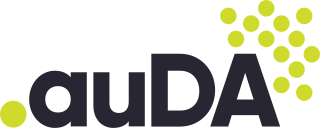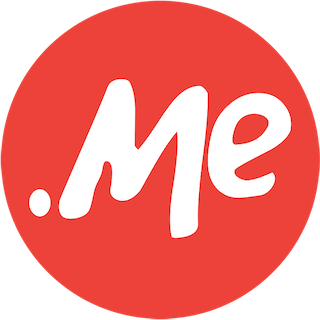Telecommunications in Trinidad and Tobago include radio, television, fixed and mobile telephones, and the Internet.

Port of Spain, officially the City of Port of Spain, is the capital of Trinidad and Tobago and the third largest municipality, after Chaguanas and San Fernando. The city has a municipal population of 37,074 (2011), an urban population of 81,142 and a transient daily population of 250,000. It is located on the Gulf of Paria, on the northwest coast of the island of Trinidad and is part of a larger conurbation stretching from Chaguaramas in the west to Arima in the east with an estimated population of 600,000.

The Internet Assigned Numbers Authority (IANA) is a standards organization that oversees global IP address allocation, autonomous system number allocation, root zone management in the Domain Name System (DNS), media types, and other Internet Protocol–related symbols and Internet numbers.
A domain name registry is a database of all domain names and the associated registrant information in the top level domains of the Domain Name System (DNS) of the Internet that enables third party entities to request administrative control of a domain name. Most registries operate on the top-level and second-level of the DNS.
The domain com is a top-level domain (TLD) in the Domain Name System (DNS) of the Internet. Created in the first group of Internet domains at the beginning of 1985, its name is derived from the word commercial, indicating its original intended purpose for subdomains registered by commercial organizations. Later, the domain opened for general purposes.

The domain name .org is a generic top-level domain (gTLD) of the Domain Name System (DNS) used on the Internet. The name is truncated from 'organization'. It was one of the original domains established in 1985, and has been operated by the Public Interest Registry since 2003. The domain was originally "intended as the miscellaneous TLD for organizations that didn't fit anywhere else." It is commonly used by non-profit organizations, open-source projects, and communities, but is an open domain that can be used by anyone. The number of registered domains in .org has increased from fewer than one million in the 1990s, to ten million in 2012, and held steady between ten and eleven million since then.

The domain name .edu is a sponsored top-level domain (sTLD) in the Domain Name System of the Internet. The domain was implemented in 1985 to create a domain name hierarchy for organizations with a focus on education. At the time, it was open for registration for entities from any region. Since 2001, new registrants for second-level domain names have been required to be United States–affiliated institutions of higher education.

.au is the Internet country code top-level domain (ccTLD) for Australia. It was created on 5 March 1986. Domain name policy is managed by .au Domain Administration (auDA). As of July 2018, the registry is operated by Afilias.

.br is the Internet country code top-level domain (ccTLD) for Brazil. It was administered by the Brazilian Internet Steering Committee until 2005 when it started being administered by Brazilian Network Information Center. A local contact is required for any registration. Registrations of domain names with Portuguese characters are also accepted.

.co is the Internet country code top-level domain (ccTLD) assigned to Colombia.

The domain name pro is a generic top-level domain in the Domain Name System of the Internet. Its name is derived from professional, indicating its intended use by certified professionals.

.in is the Internet country code top-level domain (ccTLD) for India. It was made available in 1989, four years after original generic top-level domains such as .com, .net and the country code like .us. It is currently administered by the National Internet Exchange of India (NIXI).

.mx is the Internet country code top-level domain (ccTLD) for Mexico, which in 2009 was re-opened to new registrations by NIC México. In 2009, the .mx ccTLD was rolled out in three steps:

.so is the internet country code top-level domain (ccTLD) for Somalia. After a long absence, the .so domain was officially relaunched on November 1, 2010, by .SO Registry, which is regulated by the nation's Ministry of Posts and Telecommunications. It was launched through various accredited registrars around the world.
.no is the Internet country code top-level domain (ccTLD) for Norway. Norid, the domain name registry, is based in Trondheim, is owned by the state-owned Uninett and operates under supervision of the Norwegian Communications Authority. As of December 24, 2022 there were 843,749 registered .no domains. Organizations with a presence in Norway and registration at the Brønnøysund Register Centre are limited to 100 domains each. Individuals residing in Norway may register in the second-level domain priv.no and, as of June 17, 2014, directly under .no. Other second-level domains exist for organizations of certain types, such as municipalities and schools. The strict regulations have resulted in near-absence of cybersquatting and warehousing.

.ph is the Internet country code top-level domain (ccTLD) for the Philippines.
In the Domain Name System (DNS) hierarchy, a second-level domain is a domain that is directly below a top-level domain (TLD). For example, in example.com, example is the second-level domain of the .com TLD.
WHOIS is a query and response protocol that is used for querying databases that store an Internet resource's registered users or assignees. These resources include domain names, IP address blocks and autonomous systems, but it is also used for a wider range of other information. The protocol stores and delivers database content in a human-readable format. The current iteration of the WHOIS protocol was drafted by the Internet Society, and is documented in RFC 3912.

.me is the Internet country code top-level domain (ccTLD) for Montenegro.

Public Interest Registry is a not-for-profit based in Reston, Virginia, created by the Internet Society in 2002 to manage the .ORG top-level domain. It took over operation of .ORG in January 2003 and launched the .NGO and .ONG top-level domains in March 2015.














